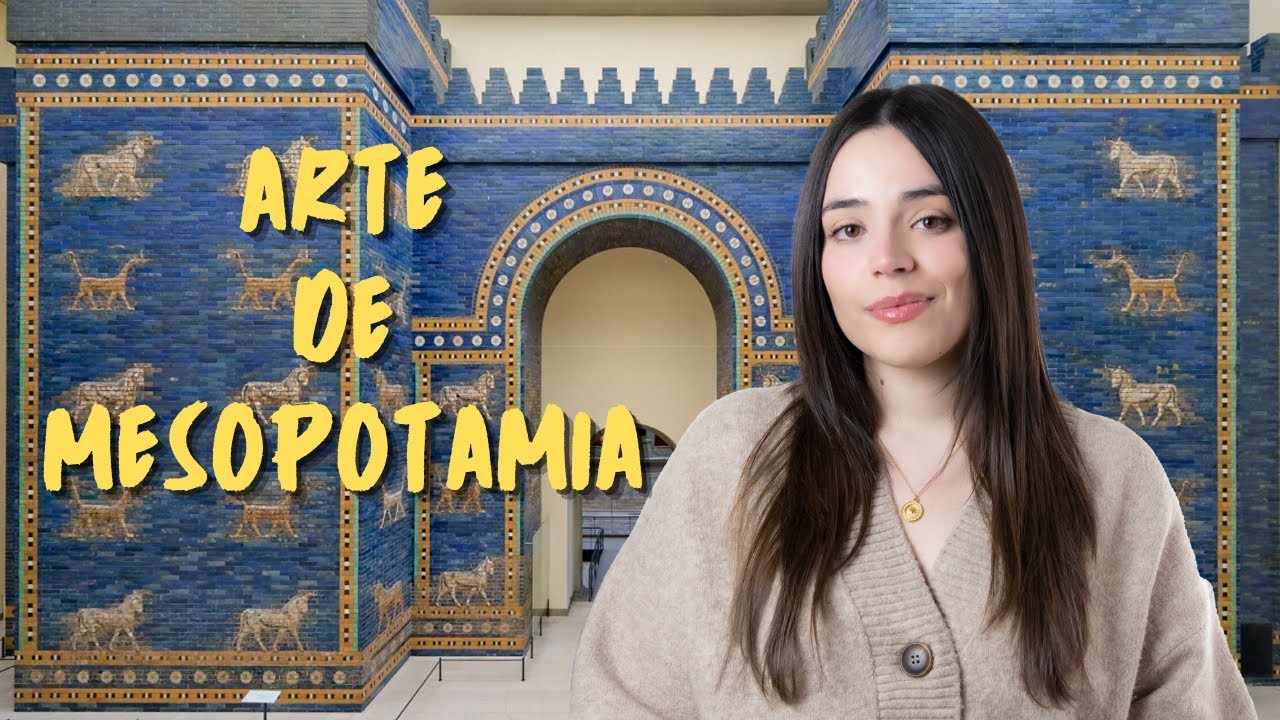Arte na Antiguidade - Mesopotâmia
Summary
TLDRThis video script explores the art and culture of ancient civilizations, focusing on the Mesopotamian region. It traces the development of writing, from cuneiform in Sumer to the alphabet, and highlights significant cultural contributions, including the famous Code of Hammurabi. The script delves into the symbolism of art in ancient societies, like the detailed depictions of power and divinity in sculptures, and the architectural wonders such as the ziggurats and the Hanging Gardens of Babylon. It also touches on the dynamics between different empires and the evolution of artistic expression throughout ancient history.
Takeaways
- 😀 The Ancient Age spans from the invention of writing 6,000 years ago to the fall of the Roman Empire 1,500 years ago.
- 😀 While traditional history focuses on civilizations like Egypt, Mesopotamia, Greece, and Rome, other cultures like the Chinese, Oceanic peoples, and Mayans also developed similarly.
- 😀 The emergence of writing marked the transition from prehistory to the Ancient Age, beginning with cuneiform in Sumeria for commercial and property records.
- 😀 Sumerians are credited with developing cuneiform, the first writing system, which evolved into the Phoenician alphabet and later influenced the Hebrew and Latin alphabets.
- 😀 Mesopotamian art often focused on gods and rulers, with features like large eyes in sculptures symbolizing divine attributes and personality.
- 😀 The Akkadians expanded their empire and refined their artistic skills, creating detailed bronze sculptures and monumental stone reliefs, like the Stele of Naram-Sin.
- 😀 The Code of Hammurabi, one of the first written legal systems, introduced the concept of 'an eye for an eye,' and influenced both religious and legal frameworks.
- 😀 Babylonian architecture, such as the Ishtar Gate, featured blue-glazed bricks and symbols of protection, like lions, demonstrating their artistic and engineering prowess.
- 😀 Assyrian art was centered around military victories and glorifying rulers, with depictions of brutal war scenes and the use of winged bulls with human heads to symbolize power.
- 😀 Despite their limited resources, these ancient civilizations created art that documented their history, celebrated their gods, and reinforced the power of their rulers.
Q & A
What period does the 'Ancient Age' refer to in history?
-The Ancient Age refers to the period from the emergence of writing about 6,000 years ago to the fall of the Roman Empire about 1,500 years ago.
How do contemporary historians view the definition of historical periods?
-Contemporary historians argue that historical periods should not be defined by specific political events or dates, but by social behaviors and stages of collective development, which often occurred similarly across different civilizations, even without direct contact.
Which civilizations are commonly associated with the Ancient Age in most history books?
-In most history books, the Ancient Age is commonly associated with Egypt, Mesopotamia, Greece, and Rome.
What is the significance of writing in the transition to the Ancient Age?
-The emergence of writing marks the transition from prehistoric times to the Ancient Age. Writing systems like pictographs were used for record-keeping and trade as civilizations grew and began to develop.
What were the first forms of writing used by ancient civilizations?
-The first forms of writing included cuneiform in Sumer, which was a pictographic writing system used for accounting and recording transactions, and hieroglyphic writing in Egypt.
How did writing systems evolve during the Ancient Age?
-Writing systems evolved from pictographs to more abstract symbols. The Sumerians' cuneiform led to the development of the Phoenician alphabet, which influenced the Greek alphabet and, eventually, the Hebrew and Latin alphabets.
What is the historical origin of the phrase 'eye for an eye, tooth for a tooth'?
-The phrase originates from the Babylonian King Hammurabi's code, which established laws of justice and retribution. This principle of proportional punishment became well-known throughout history.
What were the characteristics of Mesopotamian art?
-Mesopotamian art was often focused on religious and cultural representations. Despite limited stone resources, the Mesopotamians used clay for sculptures and tablets. Their art frequently depicted gods, rulers, and symbols of power, like large, detailed beards and turbans.
What role did ziggurats play in Mesopotamian society?
-Ziggurats were monumental structures that served as temples, administrative centers, and places for worship. They were massive stepped pyramids and played a central role in religious and social life, often housing statues of gods at their peak.
What is the significance of the Hanging Gardens of Babylon?
-The Hanging Gardens of Babylon, built by King Nebuchadnezzar II, were one of the Seven Wonders of the Ancient World. The gardens were created for his queen and featured large terraces with trees, fruit plants, and cascading water, mimicking her homeland's mountainous terrain.
How did Assyrian art reflect the military and social values of the empire?
-Assyrian art emphasized military prowess, depicting scenes of hunting, war, and conquest. The art often featured detailed representations of battles, including kings defeating lions, symbolizing strength and courage. This focus on virility and power was a reflection of Assyrian values.
Outlines

This section is available to paid users only. Please upgrade to access this part.
Upgrade NowMindmap

This section is available to paid users only. Please upgrade to access this part.
Upgrade NowKeywords

This section is available to paid users only. Please upgrade to access this part.
Upgrade NowHighlights

This section is available to paid users only. Please upgrade to access this part.
Upgrade NowTranscripts

This section is available to paid users only. Please upgrade to access this part.
Upgrade NowBrowse More Related Video

ARTE MESOPOTÂMICA PARA O ENEM E VESTIBULARES

✅MESOPOTÂMIA: RESUMO DESENHADO DAS GRANDES CIVILIZAÇÕES DA ANTIGUIDADE ORIENTAL| IDADE ANTIGA - ENEM

A ARTE NA MESOPOTÂMIA I HISTÓRIA DA ARTE #03

MESOPOTAMIA, el ARTE de las PRIMERAS CIVILIZACIONES de la HISTORIA | OBRAS y CARACTERÍSTICAS

Araling Panlipunan 8 MATATAG Q1 Week 2-2 Kabihasnan sa Lambak ng Tigris Euphrates with PPT and DLL

Rise of Sumer: Cradle of Civilization DOCUMENTARY
5.0 / 5 (0 votes)